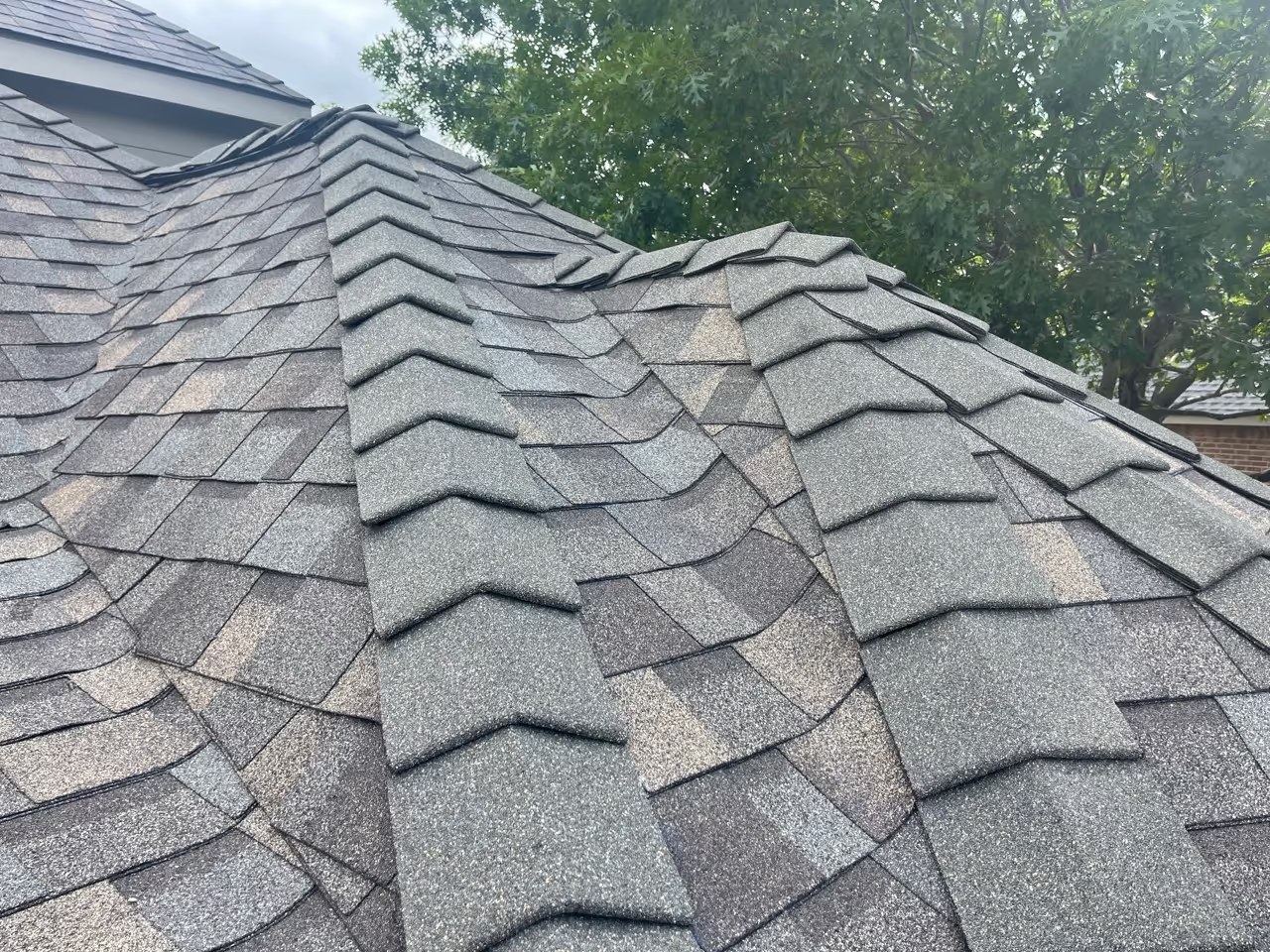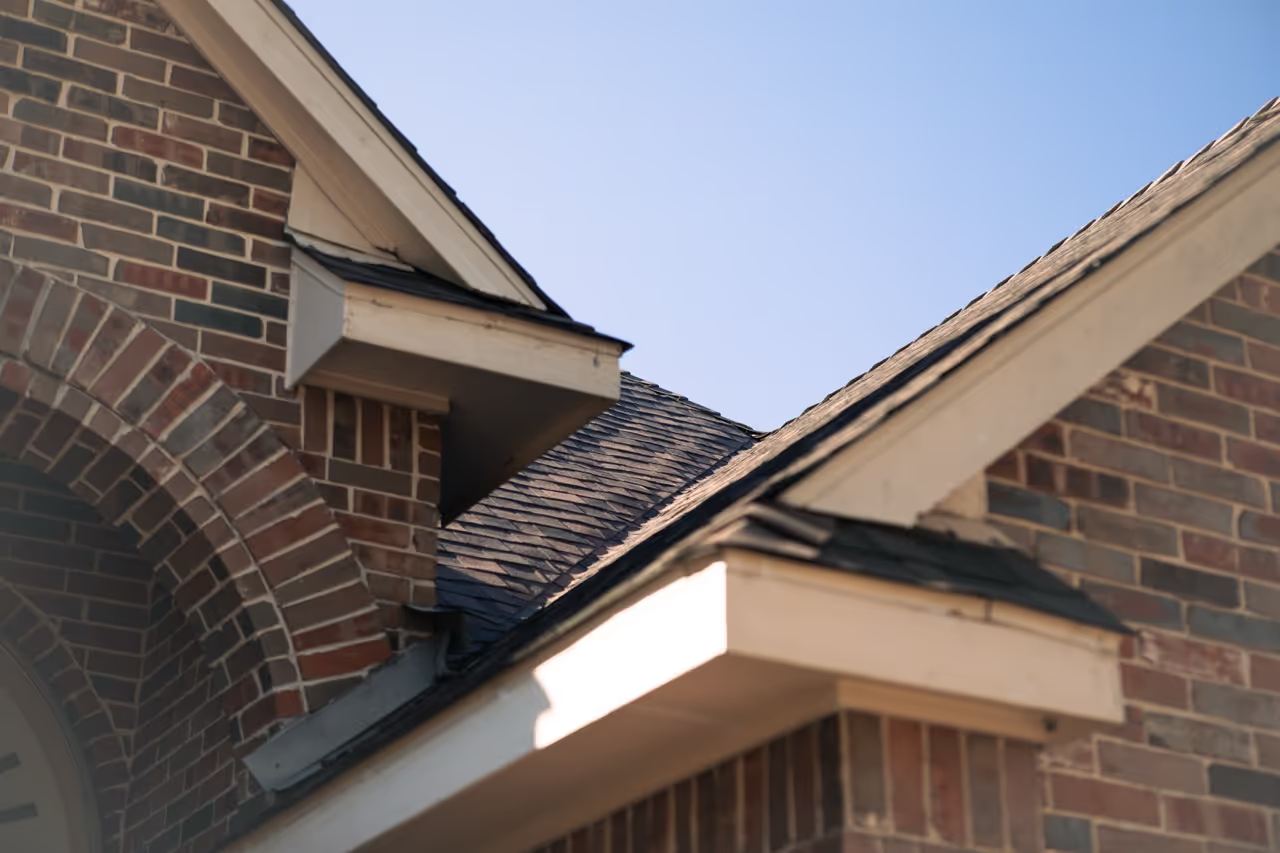View Quick Summary
With Texas leading the nation in hail damage claims at 192,988 annually, DFW homeowners need expert guidance to navigate the insurance process. This comprehensive guide reveals exactly how to document hail damage, work with adjusters, and get your claim approved without delays. Phil Goodwin's 20+ years helping Rockwall and DFW families recover from storms provides the insider knowledge insurance companies don't want you to know.
Why Texas Leads the Nation in Hail Damage Claims
Texas isn't just the hail capital of America. It's the insurance claim battleground where homeowners fight for fair coverage after every storm.
With nearly 193,000 hail claims filed annually and DFW experiencing 10-20 significant hail events each year, your roof faces constant threats that insurance companies increasingly try to minimize or deny.
The Numbers That Matter for North Texas Homeowners
The numbers tell a sobering story for North Texas homeowners:
- Rockwall County alone sees an average of 8 severe hailstorms annually
- April and May bring baseball-sized hail that can destroy a roof in minutes
- Insurance companies deny roughly 15% of initial claims
- "Improper documentation" and "wear and tear" are the top denial reasons
Understanding this reality is your first step to protecting your home and wallet.
Why Insurance Companies Fight Claims
Insurance companies profit when claims get denied or underpaid, which is why having proper documentation and expert assistance makes the difference between full coverage and fighting for months over legitimate damage.
Recognizing Hail Damage: What Insurance Adjusters Actually Look For
Not all hail damage is visible from the ground, which is exactly what insurance companies count on when denying claims.
After 20+ years inspecting roofs across DFW, we know exactly where damage hides and what adjusters document to approve or deny your claim.
Surface Impact Marks
Hail strikes create distinct patterns on shingles that trained eyes recognize immediately. Look for dark spots where impact has knocked away protective granules, exposing the asphalt mat underneath.
These spots might seem minor, but each one is a future leak waiting to happen when Texas heat expands and contracts the damaged areas.
Bruising and Mat Fractures
The most expensive damage often shows no visible marks at all. Hail bruising occurs when impact crushes the fiberglass mat inside shingles without breaking the surface.
Run your hand across shingles feeling for soft spots or indentations. These hidden fractures cause premature failure but require specific documentation techniques adjusters respect.
Collateral Damage Indicators
Smart adjusters check your entire property for supporting evidence:
- Dented gutters and downspouts
- Dinged AC units and outdoor equipment
- Damaged window screens and awnings
- Pockmarked metal surfaces and siding
- Cracked or chipped fence posts
Document everything because adjusters use this collateral damage to verify your roof damage claims.
Granule Loss Patterns
Check your gutters for excessive granules after storms. While some granule loss is normal, hail damage causes massive shedding that leaves shingles vulnerable to UV damage.
Insurance companies often claim this is "normal weathering," but proper documentation of granule patterns proves storm-related damage.
The Critical 30-Day Window: Why Timing Determines Claim Success
Texas insurance policies contain a ticking time bomb most homeowners don't know about: the 30-day filing deadline.
While policies technically allow longer, insurance companies routinely deny claims filed after 30 days by arguing you can't prove which storm caused the damage.
Why Insurance Companies Use Time Against You
This isn't just bureaucracy. It's strategic.
Insurance companies know that the longer you wait, the harder it becomes to tie damage to a specific weather event. They'll claim your damage could have occurred during any storm, making it impossible to process your claim.
Even if you have clear hail damage, waiting past 30 days gives them ammunition to reduce or deny coverage.
Your Critical Timeline After a Storm
- 24-48 hours: Get professional inspection and documentation
- Within 1 week: Upload photos to your insurance portal
- Within 2 weeks: File formal claim with complete documentation
- By day 30: Have approval or be preparing appeal with additional evidence
Missing this window doesn't just risk denial. It can affect your future coverage.
Insurance companies track claim patterns, and late filings get flagged as suspicious, potentially affecting your rates or ability to renew coverage.
Don't wait another day. Call Phil at 844-714-7445 for immediate storm damage documentation that protects your claim.
Phil's Proven Documentation System for Claim Approval
After helping hundreds of DFW families navigate insurance claims, we've developed a documentation system that gets results.
This isn't about taking a few photos. It's about building an evidence package that insurance companies can't reasonably deny.
Step 1: Immediate Storm Documentation
Before even climbing on your roof, document the storm itself:
- Save weather reports from the National Weather Service showing hail size and wind speeds
- Screenshot local news coverage mentioning your area
- Take photos of hail on the ground with measuring tape or coin for scale
- Note exact time and date of storm occurrence
- Gather neighbor testimonies if possible
This baseline evidence proves a qualifying weather event occurred.
Step 2: Comprehensive Roof Inspection
Professional inspection involves examining every square foot of your roof surface. We photograph each damaged shingle with numbered markers, creating a damage map adjusters can follow.
Close-up photos show impact patterns, while wide shots establish damage distribution across roof sections.
We also document slope, age, and overall roof condition to prevent "pre-existing condition" denials.
Step 3: Testing and Measurements
Insurance companies respect data. Our technical approach includes:
- Hit density tests counting impacts per square
- Moisture readings proving water infiltration
- Core samples showing invisible mat fractures
- Thermal imaging to detect hidden moisture
- Detailed measurements of affected areas
This technical documentation elevates your claim beyond simple photo evidence.
Step 4: Collateral Evidence Package
Document all storm-related damage to your property. Every dent, ding, and crack strengthens your case.
We photograph everything systematically, creating a comprehensive property damage assessment that makes denial nearly impossible.
Step 5: Professional Report Compilation
We compile everything into a professional report that speaks the insurance industry's language.
Technical terminology, industry-standard measurements, and systematic presentation show adjusters you mean business. This report becomes your claim's foundation and appeal ammunition if needed.
Meeting the Insurance Adjuster: Your Make-or-Break Moment
The adjuster meeting determines your claim's fate. Most homeowners don't realize adjusters have quotas and guidelines that influence their decisions.
Understanding their perspective and process helps you maximize your settlement.
Before the Adjuster Arrives
Preparation is everything. Your checklist should include:
- Documentation package printed and organized
- Clear access to roof and attic
- All debris removed (but don't repair anything)
- Visible damage marked with chalk or tape
- List of questions and concerns ready
Adjusters need to see damage in its original state, so resist the urge to "clean up" too much.
During the Inspection
Stay with the adjuster throughout their inspection. Point out documented damage, but let them do their job.
Take photos of what they photograph. Note what they measure and test.
If they dismiss obvious damage, politely ask them to document it anyway "for the record." Their own photos become powerful evidence if you need to appeal.
The Negotiation Phase
Adjusters often start with lowball assessments, hoping you'll accept rather than fight.
Don't agree to anything immediately. Request a detailed written report explaining their coverage decisions.
If their assessment seems low, express concern and mention you'll be getting a second opinion. This often prompts more reasonable offers.
After the Adjuster Leaves
Document everything discussed. Request copies of all photos and reports.
If the settlement seems insufficient, you have the right to challenge it. Most homeowners don't realize initial offers are negotiable, leaving thousands on the table.
Common Denial Tactics and How to Counter Them
Insurance companies have playbooks for minimizing claims. Knowing their tactics helps you prepare counters that protect your coverage.
"Normal Wear and Tear"
The most common denial reason for older roofs. Insurance companies claim your damage is from age, not storms.
Counter this by:
- Showing pre-storm photos if available
- Documenting specific storm date with weather reports
- Having professional assessment of impact patterns vs. aging
- Proving that impact marks have distinct characteristics wear patterns don't exhibit
"Cosmetic Damage Only"
Some insurers claim hail damage is purely cosmetic and doesn't affect roof function. This is false.
Every impact point is a potential leak. Counter with documentation showing mat fractures, granule loss measurements, and moisture readings.
Reference manufacturer specifications showing that impact damage voids warranties and reduces roof lifespan.
"Improper Installation"
Insurers may blame damage on installation issues rather than storms.
Your defense should include:
- Installation records and permits showing code compliance
- Evidence that damage patterns match hail impact, not installation failures
- Documentation showing multiple impact points across the roof
- Professional opinion that damage is storm-related
"Previous Storm Damage"
Companies claim damage is from old storms you should have claimed earlier.
Counter with dated photos showing roof condition before recent storms, weather records proving recent hail events, and documentation that damage appears fresh without weathering that would indicate age.
Need help fighting a denial? Phil has successfully helped hundreds of families get claims approved. Call 844-714-7445 for expert claim assistance.
The Supplement Process: Getting Full Replacement Value
Initial insurance payments rarely cover full replacement costs. The supplement process is where you recover the difference between initial payment and actual costs.
Understanding Depreciation
Insurance companies apply depreciation to reduce payments, but you're entitled to recover this through supplements.
Key steps to maximize your supplement:
- Document actual replacement costs from contractors
- Show current material prices (often exceeding insurance estimates)
- Factor in code upgrades required by current building standards
- Include all associated costs like permits and disposal fees
Hidden Damage Discovery
Once work begins, contractors often discover additional damage.
Document everything with photos. Get written assessments explaining why damage wasn't visible initially.
Submit supplement claims for each new discovery. Insurance must cover hidden damage directly related to the covered event.
Code Compliance Updates
Building codes change, and insurance must pay for required updates.
If your roof needs additional venting, different underlayment, or other code-required improvements, document these requirements with city permits and submit for supplemental payment.
When Claims Get Denied: Your Appeal Rights
Denial isn't final. You have specific rights under Texas law that insurance companies hope you don't exercise.
The Formal Appeal Process
Your appeal strategy should follow these steps:
- Request denial reasons in writing with specific policy language
- Challenge each point with contradicting evidence
- Submit new documentation addressing their concerns
- Request reconsideration with a different adjuster
- Mention Texas Department of Insurance if needed
Texas Department of Insurance Intervention
TDI takes policyholder complaints seriously.
File online with all documentation. Insurance companies must respond within 15 days.
TDI reviews practices and can force claim reconsideration. Even mentioning TDI involvement often prompts insurance company cooperation.
When to Consider Legal Action
If your claim exceeds $20,000 and you have clear documentation, legal action might be worthwhile.
Many attorneys work on contingency for insurance disputes. Bad faith denial can result in additional damages.
The threat of litigation often produces settlements without court.
Protecting Your Coverage for Future Claims
How you handle current claims affects future coverage. Smart strategies protect your insurability while maximizing protection.
Maintaining Your Claims History
Multiple claims within three years can affect rates or renewability. But don't let this stop you from filing legitimate claims.
Best practices include:
- Document everything to show claims are from separate weather events
- Consider higher deductibles to reduce small claims frequency
- Work with agents who understand Texas weather patterns
- Keep detailed records of all maintenance and repairs
Annual Roof Inspections
Professional annual inspections document roof condition over time.
This creates a paper trail showing proper maintenance. Photos prove damage is storm-related, not neglect.
Inspection reports become powerful evidence for future claims.
Choosing the Right Coverage
Review your policy annually to ensure:
- Replacement cost coverage, not actual cash value
- Understanding of deductible structure (percentage vs. flat rate)
- Law and ordinance coverage for code updates
- Supplemental coverage if you're in high-risk areas
Take Action Today: Protect Your Home and Coverage
Every day you wait after storm damage is a day closer to claim denial.
Texas weather doesn't wait, and neither should you. Professional inspection and documentation make the difference between full coverage and fighting insurance companies for months.
Don't let insurance companies minimize legitimate damage or deny valid claims.
With proper documentation and expert assistance, you can get the coverage you've paid for and deserve. Your roof protects everything you value. Make sure your insurance does the same.
Ready to protect your claim? Phil Goodwin personally handles every inspection and guides you through the entire insurance process. With 20+ years fighting for DFW homeowners, he knows exactly how to get your claim approved. Call 844-714-7445 now for your free storm damage inspection and insurance claim assistance.

Get Your Free Storm Damage Inspection
Don't wait for small roof problems to become expensive disasters. We'll inspect your roof completely free and show you exactly what needs attention. If we find storm damage, we'll help you get it covered by insurance. If your roof is fine, you'll have peace of mind.




